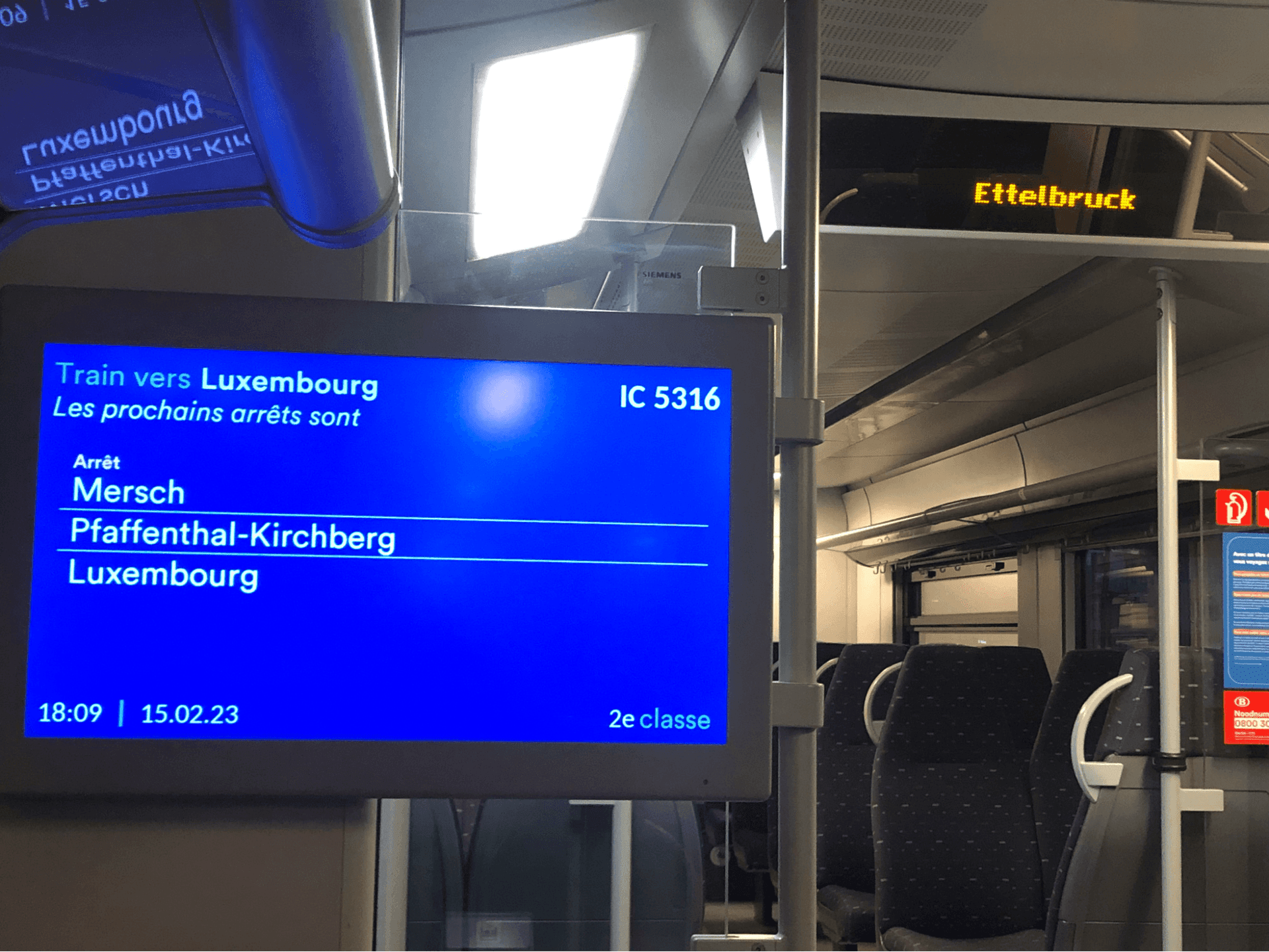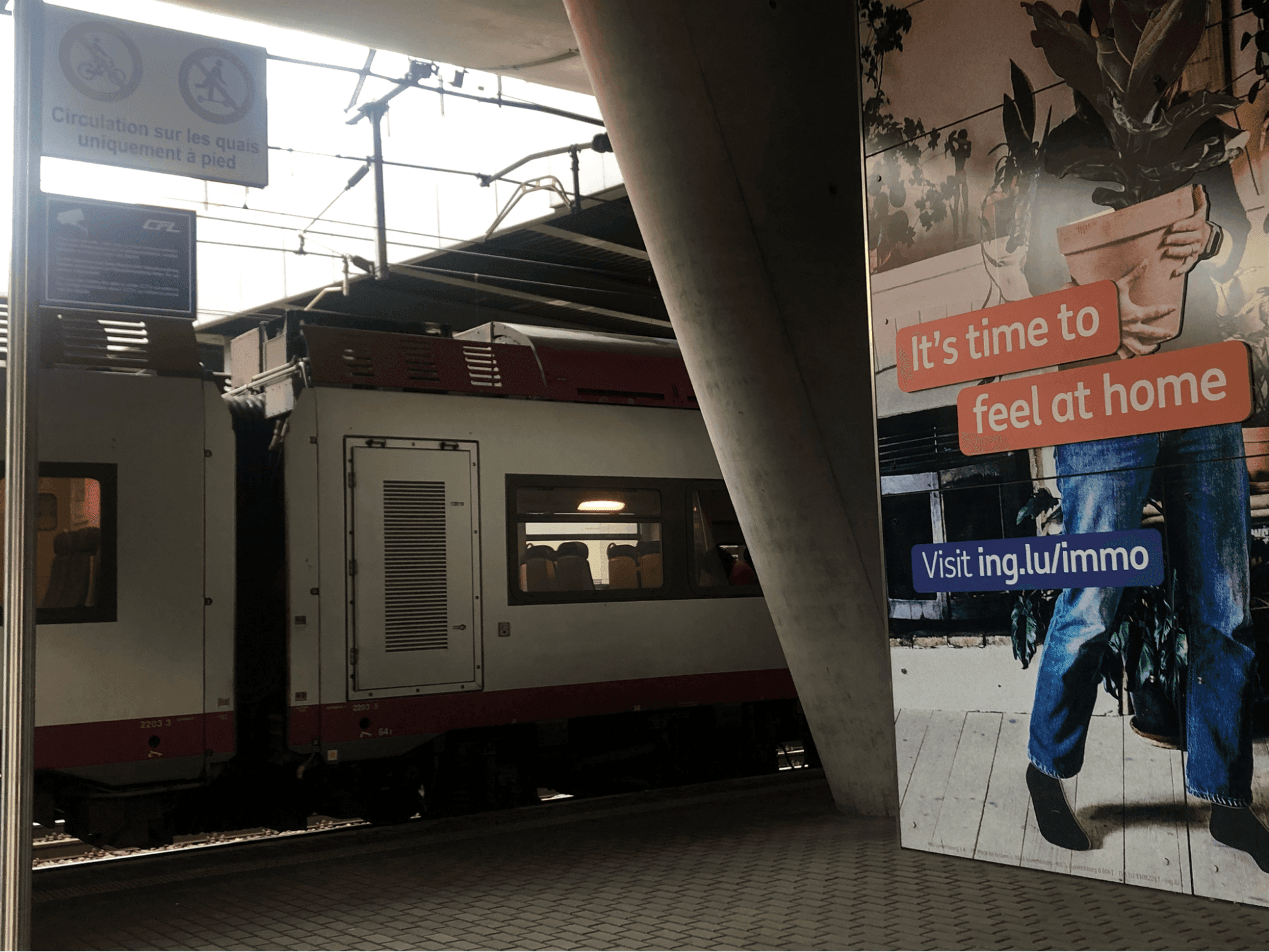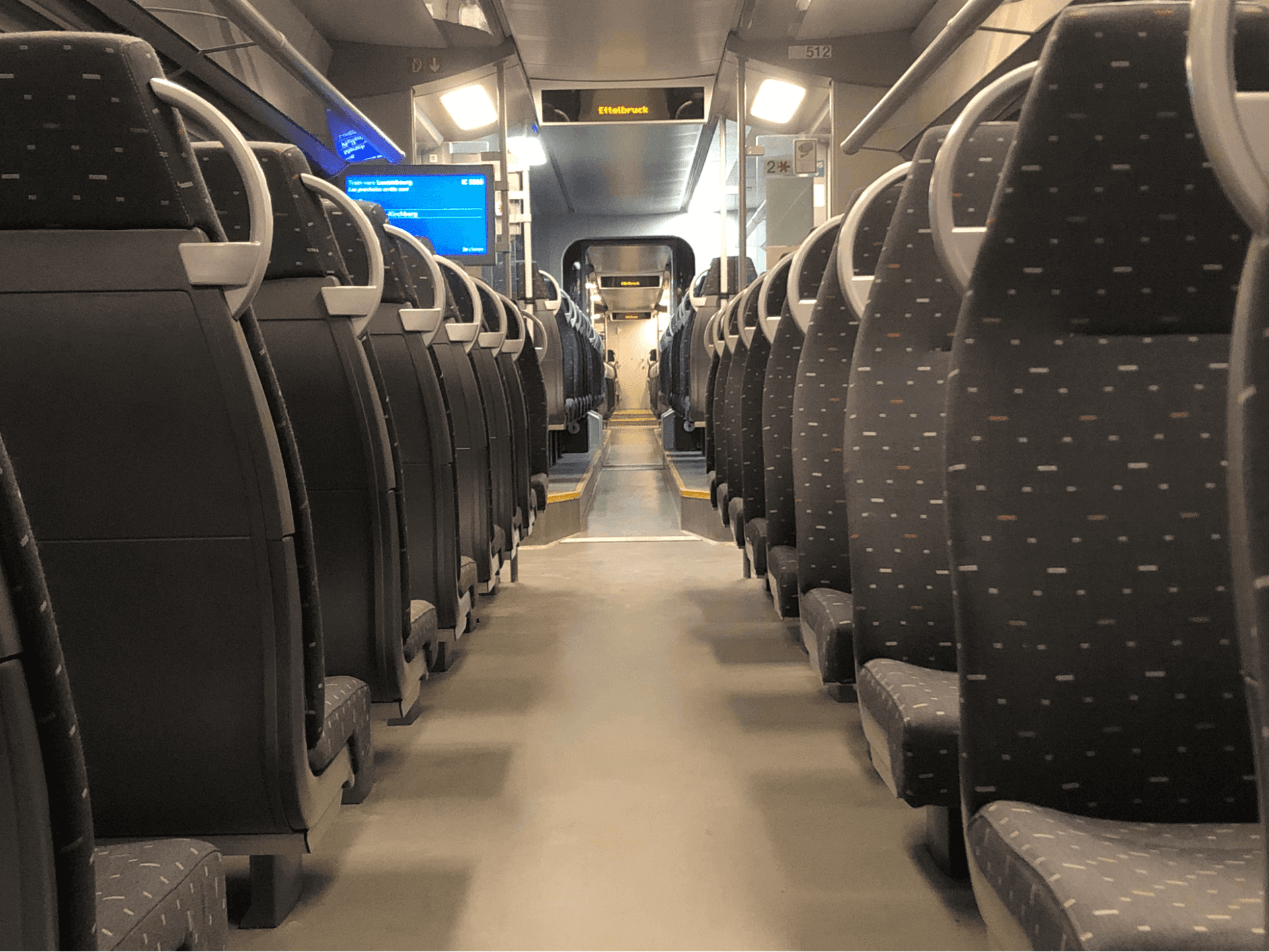
Why public transport is free in Luxembourg
Learn how to get around this picturesque country using reliable and free public transport.
All public transport in Luxembourg has been free for residents and tourists since February 2020. It is not only a grand gesture, but also a decision dictated by practical considerations.
Luxembourg is a rich country. Its residents have more cars per capita than anyone else in the European Union. This causes traffic jams, and car exhausts poison the air. Free public transportation is designed to combat this: five more passengers on the tram means five fewer drivers on the road. And how to convince people to switch to public transport? Money (and saving it) is the best motivation.

Besides, public transport wasn’t profitable anyway. At the time it was made free, the proceeds from ticket sales did not even compensate for 10% of transportation costs. The remaining expenses were compensated by taxes. Therefore, nothing has radically changed.
Luxembourg is the first country in the world to completely abandon fares for public transportation on its territory.
What transport is free in Luxembourg
All public transport within the country is free. The list includes trains, buses, trams and even the funicular railway. Passengers only need to buy a ticket if they want to travel first class or board a cross-border train. There is no charge for luggage and pets either.
Nevertheless, taxi services are not free of charge in the country, and neither are some parking spaces for cars. If you have a personal vehicle, read more about parking in Luxembourg in our dedicated guide: How to park your car in Luxembourg.
Free trains in Luxembourg
The Luxembourg Railroad consists of six lines with some branches. All lines start at the capital, go to different regions of the country and continue beyond its borders, while branches are usually dead-ends leading to relatively remote communities.
Trains in Luxembourg are divided into ordinary (RegionalBahn) and high-speed (Regional Express). Both types of trains run the same routes, only the express trains make less stops.
You don't need a ticket to ride a train, just get on and go. You can find train routes and schedules in the CFL mobile app.
Free buses in Luxembourg
The bus is the most popular form of public transport in Luxembourg. The bus network is more extensive than the rail network. Almost anywhere in the country can be reached by bus. More than 250 bus routes operate nationwide. Thirty-one of them operate in the capital.

Free trams in Luxembourg
Luxembourg has abolished trams around the middle of the last century. The tram service only resumed a few years ago. So now there is only one tram line in Luxembourg. It connects the Central Train Station (Gare Routiere) to Kirchberg. One to four more lines are planned to open before 2035. Of course, they will also be a part of the public transport network, which means that tram rides will remain free.
Free funicular in Luxembourg
Normally, the cable car is an attraction and/or the way to the ski slope. But the Luxembourg funicular is considered full-fledged public transport due to the terrain: it is the shortest way to get up to the Kirchberg Plateau or down from it to the Pfaffenthal district.
Do you need to pay for cross-border transport in Luxembourg
Yes, if you are going abroad, you will need to buy a ticket. Do not neglect it: the most expensive tickets cost no more than 100 euros, and the fines for fare evasion can reach several thousand euros.
By land, you can get from Luxembourg to the border countries: France, Germany and Belgium. The easiest way to cross the border is by train. The price of the ticket depends on the distance and the destination: tickets to major cities are more expensive.

How to get to France
The cheapest and fastest way is a second-class ticket to the border city of Thionville: half an hour and 6 euros. But getting to the capital will take 2.5 hours and will cost 66 euros. For comparison, a ticket to Strasbourg, which is located at the same distance, costs more than three times cheaper: 19.50 euros.
How to get to Germany
A ticket to the border city of Trier will cost 5.40 euros, and it takes an hour to get there. Getting to Frankfurt and Stuttgart will take 4.5 and 4 hours and cost 65 and 95 euros respectively.
How to get to Belgium
The trip to the border city of Arlon takes only 20 minutes and costs 4.60 euros. The 3.5 hour trip to Brussels costs 33.10 euros, and the 4.5 hour trip to Antwerp costs 43.50 euros.
Which other countries have free public transportation?
Several places around the world offer public transportation, although the policies are rarely national as in Luxembourg. In most cases, free transportation only covers specific cities or certain groups of people.
- Malta: Implemented free public transportation for all residents as of October 1, 2022.
- Estonia: Tallinn, the capital of Estonia, was one of the first European cities to implement free public transport for its registered residents since 2013. Free public transport in Tallinn applies to buses and trains operating within the city.
- Brazil: although not at the national level, Brazil stands out for having more than 100 cities that offer free public transport through the 'Tarifa Zero' program. These cities are located in various states such as Rio Grande do Sul, Santa Catarina, Paraná, Sao Paulo, Minas Gerais, Rio de Janeiro, among others.
- United States: the city of Kansas City became the first major US city to offer free public transportation to all its residents in 2020. Other smaller cities, such as Chapel Hill and Corvallis, also have free public transportation.
- China: the city of Chengdu offers free public transportation to residents who hand in their old vehicles for scrapping, as part of a plan to reduce pollution and traffic.
- Australia: the city of Perth has offered free public transportation in the city center since 1999. Other Australian cities, such as Adelaide or Melbourne, also have free public transportation zones.
- Germany: some cities such as Augsburg and Kelheim offer free transportation in specific areas or for the entire municipality.
- Belgium: cities such as Duffel and Ingelmunster have free public transportation systems
- Sweden: cities such as Avesta, Hallstahammar and Kiruna offer free bus lines.
- Serbia: from January 1, 2025, Belgrade bus and tram lines are completely free of charge. However, it doesn't apply to other cities and to some specific lines like the airport express.
Luxembourg Airport and its destinations
Luxembourg Findel Airport is the only international airport in the country. It is located 8 kilometers (or 5 miles) east of downtown Luxembourg and operates in Central European Time. As of June 2023, 17 airlines fly from Luxembourg to 126 airports around the world, including Luxair, Luxembourg's flagship airline. The most popular destinations are the United Kingdom, Germany, Portugal, Netherlands, and France.м
Why trams, trains and buses in Luxembourg are free
Luxembourg is a high-income country with inexpensive gasoline. Free public transportation was an attempt to relieve traffic congestion on the streets by motivating drivers to travel by bus and train instead.
After more than three years of the experiment, we can say that so far it has not fulfilled its main task. Traffic congestion decreased during the covid restrictions, but a year ago it was back to pre-covid levels or even exceeded them.
After more than five years of the experiment, free transport has become a measure widely valued and applauded by many, however, one of its main objectives, which was to reduce traffic, has not been achieved.
Why free public transportation has not reduced the number of drivers
The financial motivation was too small. Luxembourg remains a country with large incomes and cheap fuel. And the authorities did not artificially raise fuel prices so as not to exacerbate the energy crisis.
At the same time, public transportation has not radically improved. Trains and buses work the same as before, trams and funiculars also started functioning before the free fare era.
A substantial part of the drivers in traffic jams are people who work in Luxembourg and live abroad. Public transportation does not help them because travel between countries is not free. Yes, these people can drive through the border, leave their car in a parking lot and continue to travel by public transport. But for them driving straight to work in their car is still very often preferable.

The result is expected to become more prominent when the government introduces additional measures: four new tramlines in addition to the existing one, a reform of the rail service, and dedicated lines for buses. Then being convenient and free will be a more convincing argument for choosing public transportation than just being convenient.
Paid transportation won't make much of a difference to the budget. If ticket prices are kept the same, they will still cover less than 10% of transportation costs. Currently, it is covered by taxpayers.
Although free transport has not yet fulfilled its practical purpose, it is a nice and true advertisement for Luxembourg as a social justice state, where everyone has the right to affordable travel.
Frequently Asked Questions (FAQ)
Is public transport free for everyone or only for Luxembourg citizens
What do Luxembourg ticket inspectors check on public transport
Is river transport in Luxembourg free
Do I need to get a free ticket for Luxembourg public transport
Could it be that I don't have a seat in a vehicle
Source: mobiliteit.lu, vdl.lu, luxtoday.lu
We took photos from these sources: Gabor Koszegi for Unsplash, Daria Saltykova for Luxtoday, maps-luxembourg-lu.com